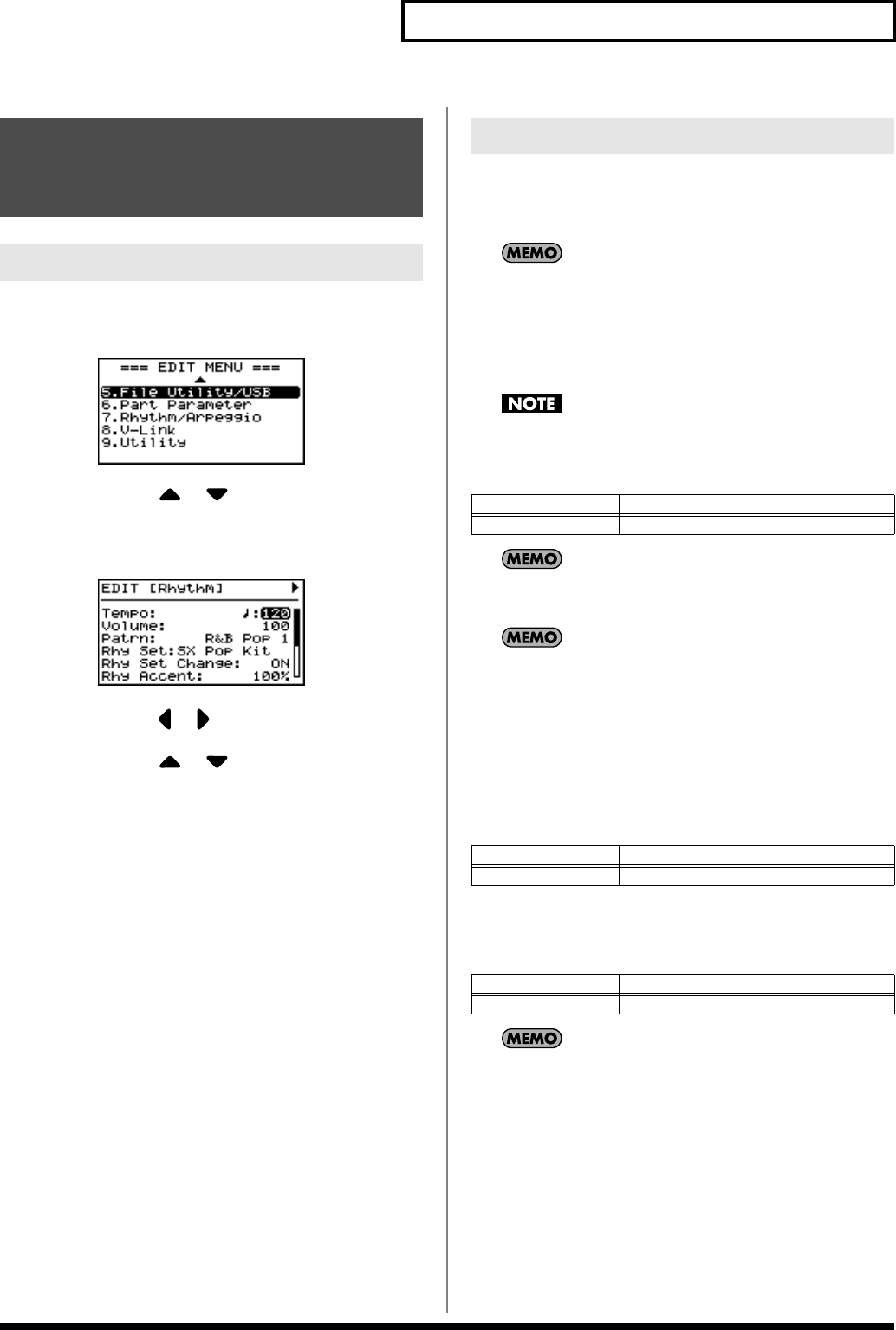
93
Detailed Settings for Each Function ([EDIT])
1.
Press [EDIT], getting the indicator to light.
The Edit Menu screen appears.
fig.05-23g
2.
Press CURSOR [ ]/[ ] to select “7.Rhythm/
Arpeggio.”
3.
Press [ENTER] to display the Edit screen.
fig.05-24g
4.
Press CURSOR [ ]/[ ] to switch screens.
5.
Press CURSOR [ ]/[ ] to move the cursor to
the parameter to be set.
6.
Press [INC]/[DEC] to set the value.
7.
When you have finished making the settings, press
[EDIT], extinguishing its indicator.
You are returned to the Tone screen.
The RD-700SX features internal drum patterns complementing Jazz,
Rock, and other various musical genres. This kind of drum pattern is
called a “Rhythm.”
For more about switching Rhythms on and off, refer to
“Playing Rhythm ([RHYTHM/SONG])”
(p. 48).
Adjusting the Tempo (Tempo)
Specify the tempo of the Rhythm.
The RD-700SX has only one tempo setting. Once you change the
setting, the tempo indicated in the Tone screen and the tempo
setting for the arpeggiator (p. 47) both change.
The way Rhythm is played and the tempo display may differ
with some Rhythm Patterns.
With Clock Source (p. 81) set to MIDI, “M:” appears in the
display, and the RD-700SX is synchronized to the tempo of the
external MIDI device. The tempo cannot be changed with the
RD-700SX when “M:” is indicated.
Adjusting the Volume
(Rhythm Volume)
Adjusts the volume of the rhythm.
Changing Patterns (Rhythm Pattern)
This selects the rhythm pattern. Select from 185 options.
You can also change a rhythm’s pattern in the
“Song/Rhythm/
Arpeggio screen”
(p. 49).
Making the Rhythm and
Arpeggio Settings
(Rhythm/Arpeggio)
How to Make Settings
Making the rhythm Settings
Parameter
Value
Tempo
10–250
Parameter
Value
Volume 0–127
Parameter
Value
Patrn
Refer to
“Rhythm Pattern List”
(p. 153).
RD-700SX_e.book 93 ページ 2006年3月23日 木曜日 午後2時52分


















